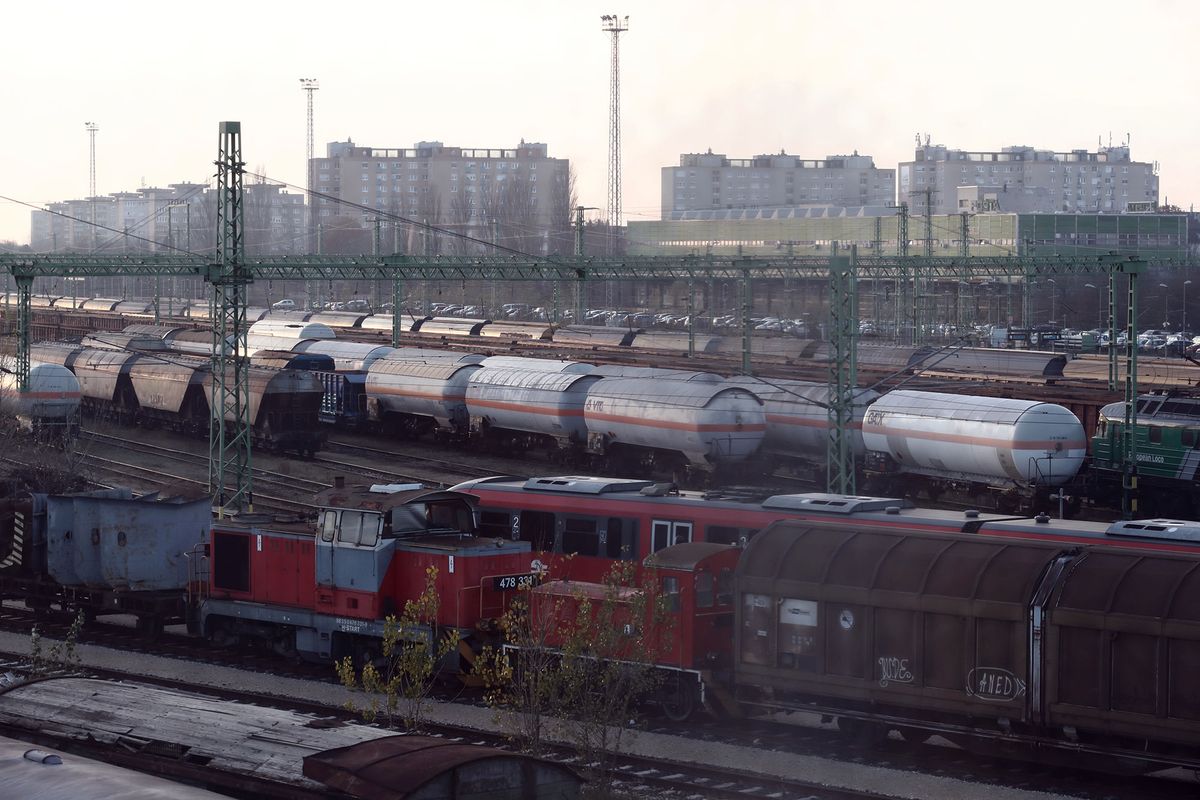It is cheaper to ride on foreign rails 24/05/22
< Retour à la listeSource: It is cheaper to ride on foreign rails (vg.hu)
It is cheaper to ride on foreign rails
In addition to the general reduction of the toll in Europe, domestic railway companies are also asking for the measurement of the amount of energy returned to the grid and the possibility of buying electricity from the market.
The impact of all previous measures to improve the competitiveness of Hungarian rail freight transport could be nullified if the state does not do something in a short period of time to compensate for runaway towing energy prices, Imre Kovács, Chairman of the Board of Directors of Rail Cargo Hungária Zrt. and member of the board of the Hungrail Hungarian Railway Association told VG. He hopes that the new government will soon put on the agenda the organization's previously submitted proposal for the reduction of damage to domestic rail freight transport and thus to the national economy.

Photo: Tamás Pesti
In addition to the reduction of the track use fee (PHD) in Europe, Hungrail is proposing other solutions, including a foreign example of a full remission of the fee and tax relief. According to his idea, following general foreign practice, the legislation should allow railway companies to buy electricity not only from the track operator, but also from the market, and MÁV should create the technical conditions for measuring incoming electricity. This could have happened by now when rail freight transport was liberalised.
Energy is money.
Imre Kovács suggested to Minister of Innovation and Technology László Palkovics a year and a half ago that the amount of electricity returned by railway vehicles should also be measured at MÁV on the basis of a proven pattern in many countries, because since the majority of locomotives on private railways are already capable of such refueling, these companies would cost less towing energy.
When asked if he hoped for a favorable answer from the Ministry, Imre Kovács stated:
"I cannot be pessimistic on this subject, since without change, for example, the draft measure for supporting combined transport, agreed with the Ministry and has already been well prepared, or the support of individual carriages living since last September, may become futile. The latter has significantly increased the traffic concerned, but since then the towing energy has become twice as expensive as the subsidy. Under these operating conditions, the viability of the V0 track may also be called into question. At the same time, the Ministry also drafted a draft on improving the conditions for the carriage of goods and indicated that it would be handed over to Hungrail for professional opinion. We look forward to this document very much."
Even the MÁV gave in.
Due to the intensive increase in prices, he pointed out, MÁV itself felt it necessary to offer railway companies an instalment payment option as a temporary solution to pay the towing energy charges, which are unprecedentedly high in international comparison, for the first months of the year. This lifeline gives the sector a chance to survive for a period of time, which should receive state aid no later than the end of June.
Avoiding the Hungarian tracks
Due to the run-up electricity prices, it has become common – as VG reported as a unique example a few months ago – that transporters, but also the railway companies themselves, avoid hungarian rails. For example, it is cheaper for the Rail Cargo Group, which includes RCH, to transfer grain from Ukraine to Germany through Slovakia than on domestic rails. In the case of other transports, RCH and its competitors have re-used the old corridor 10, which passes through Austria, Slovenia and Serbia, from which, during the Yugoslav crisis, the management of GYSEV, including Imre Kovács, diverted traffic to Sopron and Hungary. (In Slovenia, where there was a major price increase two years ago, traction energy has not increased now, and there is even support.)
A journey between Poland and the Adriatic is now cheaper to take through Austria than through Hungary.
By now, the route of the three pairs of Turkish-German container trains running exclusively through Hungary has been moved to the southern infrastructure – Serbian, Croatian, Slovenian – and regular coke traffic from Poland to Serbia bypasses the Hungarian railway track by transferring the goods to Danube ships in Bratislava and Gönyű rather than paying the unrealistically high rail costs. Recently, the customer modified the austrian route of a Ukrainian grain train from the zahonyi border crossing to Ágcs umbrella, and therefore to the Slovak track. A major Italian grain wholesaler decided to buy the crop from Romania instead of hungarian grain, as from there it can transport it cheaper through the Black Sea port, on water.

Trains are jammed
In Hungary, career investments also force companies to avoid it. Due to the Hungarian-Serbian track constructions, there are now track closures mainly on the Serbian side, which is why trains are blocked from here at the border. The 18% reduction of the railways in domestic transport has begun.
Author: B.H.L





